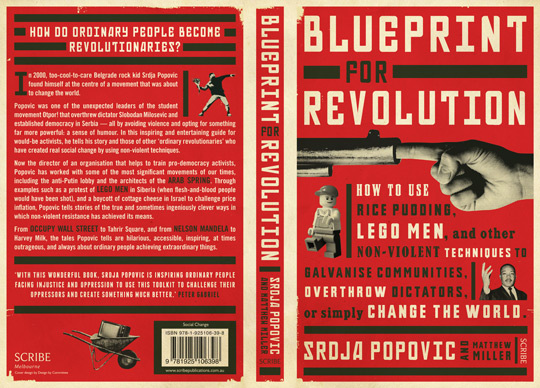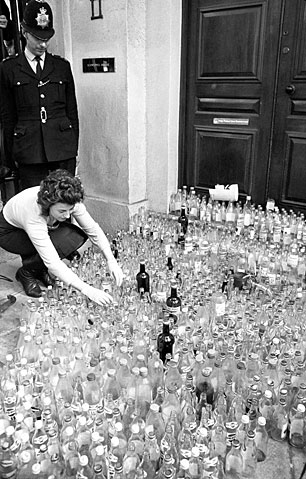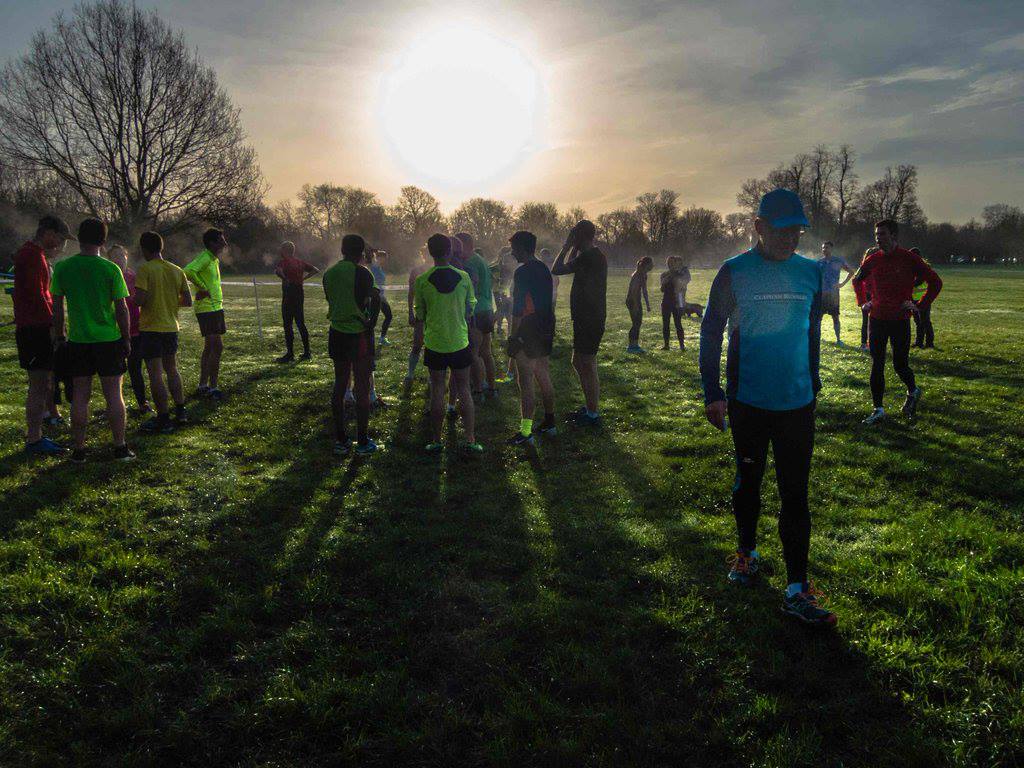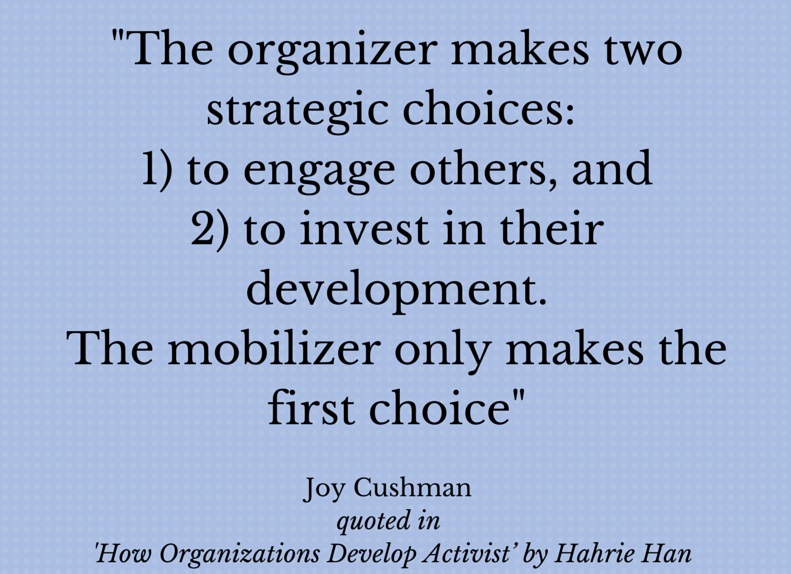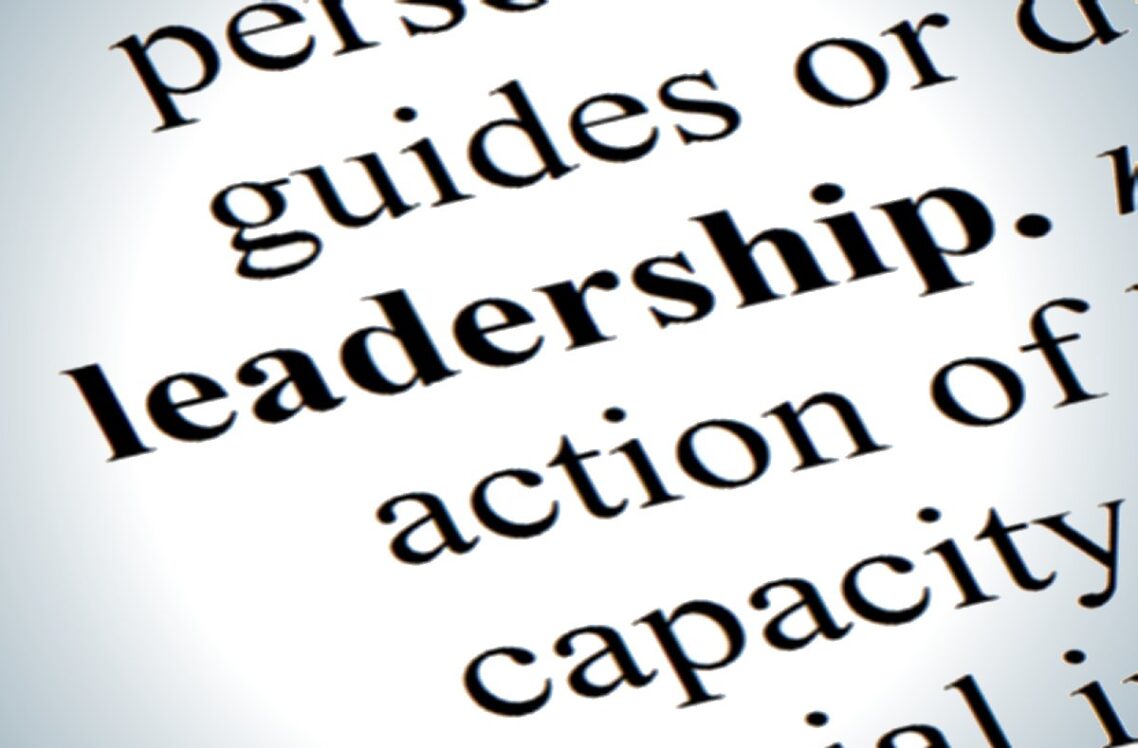One of the joys of my job is I get to go off to talks to listen to interesting people. Last week I got to enjoy thought provoking hour with Duncan Green.
Duncan is Strategic Adviser at Oxfam GB – basically from what I can tell he employed to write + say interesting and proactive things to help make NGOs and others involved in international development better. If you’ve not come across his writing before I’d strongly recommend his website ‘From Poverty to Power’.
Duncan is about to release a new book ‘How Change Happens‘ and I’d recommend going along to one of the many lectures and talks he’s giving over the next few months – it’s full of lots of useful content.
This session was especially useful as it was focused on those those involved in running and leading global campaigns, as it was part of a fascinating workshop hosted by Save the Children International and World Vision International sharing what they’d learnt from campaigning on the MDGs (and on that topic this learning from Water Aid about there work on pushing on the post-2015 agenda is also excellent).
The session was also packed full of useful insight, and big credit to both organisations to actively looking to share what they’ve found has worked and not worked from the campaigning they’ve been involved in over the last 5+ years.
But here are a few things from Duncan that got me thinking about our approach to understanding change.
How change happens? It’s complicated.
Campaigning isn’t like making a cake – we can’t just repeatedly add the same ingredients, mix them together, put in the oven, and get the same cake time and time again. Instead change is complex, ‘non-linear’, messy and involves multiple actors. Frankly its complicated!
To reflect this campaigners need to grapple with what changes a system, to reflect on the role of critical junctures in driving change (see some of my thoughts on preparing for crisis’s here) and recognise that causality is uncertain. I was struck that some of the models in Pathways of Change are really helpful here.
But our traditional planning approaches don’t accommodate complexity.
It’s not often Mike Tyson gets quoted in a campaigning presentation but his quote ‘Everyone has a plan ’till they get punched in the mouth’ is a 21st century take on the ‘No strategy survives first contact with the enemy’ quote. We need to accept that our strategies aren’t up to incorporating the complexity of the challenges we work on.
Instead Duncan suggests that when we to have two types of theories of change – Theories of Change which look at how we think the system is going to be changing even without our interventions, and a Theory of Action which focus on what we hope the impact will be of the interventions that we plan to make. (see more here)
So we need to start to think differently.
As change makers we need to start to think/feel/work in a different way. We need to nurture an inherent curiosity about how change happens, to listen to gossip which can often help us make sense of what’s happening, to learn to embrace uncertainty, and be reflective to recognise our own prejudices and power. In short, we need to ‘learn to dance with the system’ (this draws on the work of Donella Meadows who’s paper on this I’d recommend reading)
Open ourselves to unusual suspects and voices.
To dance with the system we need to look out for those who are already dancing in the system – that might be more ‘junior’ staff in our offices who are actually more ‘in touch’ with with new trends or approaches, to actively get ourselves out of the ‘thought bubbles’ that are so easily to inhabit, or through different ways of seeing he world, for example Duncan ask why do we draw so much from the scientific/econometric approaches in how we try to evaluate advocacy – could we learn as much from history, sociology or social anthropology?
Duncan’s book is published at the end of the month and available at all good bookshops – I’ve pre-ordered my copy.
Category: learning
10 reflections from NCVO Campaigning Conference
It was the NCVO Campaigning Conference yesterday – it’s always an interesting day bringing together a mix of campaigners and public affairs colleagues from across a range of issues.
As always you walk away with a notebook – or in my case multiple scraps of paper – full of notes, thoughts, good ideas and top tips – and a frustration you couldn’t be in more than one session.
Here are 10 things that I took from my morning at the Conference – do check out #ncvocc for more insight.
1. Brexit is the focus for government – both Jess Phillip MP and Jonny Mercer spoke about how the Brexit negotiations will dominate everything that happens in Parliament and Whitehall in the coming years. It’s not just because it’s the most important political decisions that many of us will see in our lifetimes, but it’s also because it’s taking up so much capacity from civil servant and ministers other issues are getting pushed to the side. Campaigners looking to get noticed will have to push harder than ever.
2. MPs really are tired of email petitions – so this isn’t news, and you almost expect to hear it from MPs in sessions like this, but when two pro-campaigning MPs who are instinctively on our side tell you that they’re fed up of pre-written email petitions, you know it’s time to think long and hard about if the tactic is doing more to hinder than help. Jess reminded us that she get’s over 6,000 emails every day, and the response to any pre-written email is to ensure a member of staff responds with a standard template email.
3. It’s MPs staff you should be getting to know – they’re the gatekeepers to most MPs, the ones who make key decisions about diaries and briefings. Build good relationships with them and it can really help you to get your campaign in front of an MP. Treat them badly and don’t expect to see much progress.
4. Ask do you really need to be in a coalition – I was fortunate to chair a really lively and interesting session on coalition campaigning. Jane Cox from Principle Consulting reminded us that there is a cost to coalitions (perhaps Jane had ready my blog on this) – sometimes a strategic partnership is a better approach than the time commitment an effective coalition can be. Jane wrote a really useful post with some of her learning from coalition campaigning.
5. Keep going until the end – too many coalitions just focus on the immediate change outcome, and when they’ve succeeded in delivering that they stop. That can be a mistake and often ensuring that you monitoring implementation is as important. This is something that you should factor into your planning – especially when applying for foundation support for your campaign.
6. We need to talk about power – Heather Kennedy from the Fair Funeral Campaign reminded us of the principle from organising that you either have organised money or organised power – if you’re opposition is organised money it can be easy for them to ‘sit it out’ until you’re coalition has come to an end. It was one of the few references through the day to power – which given campaigning is often about winning feels like it was something missing from the conversation.
7. Celebrate success in a generous way – Heather shared about how the Funeral Poverty Alliance has built it’s coalition over the last few years and managed to put the issue on the agenda – it sounds like a really great campaign coalition which doesn’t have lots of governing documents but has placed building relationships through well facilitated strategy sessions and strong face-to-face relationships. Demonstrating that coalitions don’t have to be dominated by ‘egos and logos’!
8. When developing campaign leaders high commitment should mean high support – I really enjoyed the session on developing volunteers as campaign leaders – it felt that there was a recognition that in response to the declining effectiveness to e-petitions we need to look again at building our networks.
I’ve been aware of the work that Alice Fuller and her team at the MND Association have been doing at building a network of Campaign Contacts in their local groups over the last few years, but it was great to hear more about it – and to hear some honest reflections about how much the team have learnt about the level of support they need to provide, the commitment to training and investing in volunteers, but also letting go and trusting volunteers.
9. Metrics matter – Eleanor Bullimore spoke about the work, and the challenge of developing relevant metrics to measure the impact of the work that volunteer network at The Ramblers is having. Elle suggested that as well as developing metrics for going up the the ‘ladder of engagement’ we also need to be looking at those going down – recognising that some volunteers will find they have less rather than more to offer.
10.Trust us – Joining Alice and Eleanor was Katy Styles, one of MND Associations local campaigners. It was so refreshing to hear of the ways that Katy had been able to get involved in leading MND’s campaign (Katy has helped to produce this cracking toolkit) – and to be reminded that most people aren’t paid to campaign they do it because of a passion. The big message that I’m taking from Katy was as professional campaigners we need to let go of our concerns about brand and reputation and trust our volunteers.
Update – all the presentations from the sessions are available here.
Book Review – Blueprint for Revolution
One of the things I most enjoy about going on holiday is the opportunity to dip into a good book or two.
Over the last week I’ve really been enjoying Blueprint for Revolution – How to Use Rice Pudding, Lego Men and Other Non-Violent Techniques to Galvanise Communities, Overthrow Dictators or Simply Change the World by Srdja Popvic.
Popvic is one of the leaders of the CANVAS (The Centre of Nonviolent Actions and Strategies), the Serbian based organisation that was behind the movement overthrowing Slobodan Milošević, and has taken these lessons to help other movements around the world (this is a good read on the work of CANVAS).
It’d be easy to think that the book is only intended for those who are interested in learning about overthrowing dictators, but it’s not. I found the book packed full of practical insight and brilliant stories that are relevant to anyone involved in campaigning.
It’s an easy and enjoyable read, with Popvic mixing a range of stories from his personal experience with lessons from history.
I’ll be recommending it to anyone who asks me about what makes a good campaign as it’s packed full of practical wisdom that could be applied to anyone involved in movement building.
Here are a few lessons I’m walking away with after reading the book that I’ll be looking to apply in my campaigning;
1 – Focus on small victories to build your movement – those campaigns that focus first on small achievable battles that they can win are more likely to succeed. They understand that victories can help to give your supporters confidence that they’re part on a winning side, and also help to attract others to your cause.
2 – It takes time to plan your strategy – Popvic shares a lot about the time Otpor! in Serbia took to plan and build for the actions that they then took. He’s at time critical of movements that he feels have moved to action too quickly. To be successful you need to be meticulous as you can in your planning and preparation. Leave nothing to chance.
3 – Change comes when two or more groups come together for mutual benefit – campaigns can’t be won if they just reflect the views or worldview of just one group with a community – they need to bring together different groups. Throughout the book is the message that building unity, community and trust with others is central to anyone who wants to win.
4 – Focus on the ‘Pillars of Support’ – remembering the work of Gene Sharp, who suggested that every regime is held in place by a handful of pillars – apply enough pressure to one or more pillar, and the whole system will soon collapse. But this means thinking laterally and considering what the pillars are – for example for using businesses which have close connections with those you’re looking to target. See this for how the concept has applied to the campaign for equal marriage.
5 – Make it funny – campaign can be a serious business, but Popvic is a big advocate of using ‘laughtivism’ as a tool for change, using humor as a way of undermining your target, but having some fun at the same time.
The book is, as they say, available from all good bookshops – I’d highly recommend it.
How Theory of Change can help your campaign win gold
Suggesting campaigners spend some time thinking about Theory of Change doesn’t normally elicit the same energising response that cheering on Team GB in the Olympics does!
So while I’ve been spending the last two weeks watching the Olympics, it’s got me thinking about winning and the approach that UK Sport has taken to ensure this was our greatest ever Olympics.
It strikes me that they have an incredibly clear theory of change about how they we’re going to approach Rio 2016 and build on the success from London 2012.
But what could campaigners learn from the rush of medals Team GB has won in the last fortnight?
Alongside other colleagues at Bond, we’ve been working with Jenny Ross to produce resources on Theory of Change which we hope will help to provide a useful introduction, and encourage more campaigners to use it as an approach.
Theory of Change is a key approach for any campaigner who is serious about winning to take, but one I think many of us shy away from as it’s been built up into that’s impenetrably complicated, so we hope that this video and accompany resource will help to make it more accessible.
So drawing on the lessons from the success of Team GB here are a few thoughts on how theory of change can help you approach planning your campaigning;
1. Be clear on what success looks – It’s simplistic to suggest that all Olympic athletes are going for Gold. Yes that’s what they want to achieve, but many realise it’s unlikely, but for sports that UK Sport funds it’s clear on how many medals they’re looking to achieve.
Using Theory of Change can help you be clear on what your specifically looking to achieve and be able to articulate it for all those your working with.
2. Map out the route to success – Listen to any of the Olympians and they’ve been successful by building up to the competition in Rio. It has come about through months and years of planning and meeting milestones on the way – achieving certain targets in training, winning an important competition, etc.
In the same way using Theory of Change can help you to set out what the progress on the way that you expect to see before winning the overall change – it helps you to map out the goals that you need me to meet on the way.
3. Challenge your assumptions – One of the issues where UK Sport has been criticised is the way it ruthlessly allocates resources to sports where it believes it has a medal opportunity, even when they’re unpopular. It’s a harsh approach but one which clearly produces results by making sure resources are going to the right place.
In Theory of Change, we’re asked to test our assumptions and to make sure that the resources we have are being allocated in the most effective way to deliver the outcome – just because we’ve always done something doesn’t mean we should continue to do it.
4. Look for marginal gains – Those being Team GB success in the velodrome are famous for a focus on marginal gains, which is all about small incremental improvements in any process adding up to a significant improvement when they are all added together. It means when it comes to winning nothing is left un-investigated.
Theory of Change asks us to think about the context within which we’re working, and what that will mean for the work. To investigate and consider all the factors that might help or hinder us on our route to winning.
5. Reflect, review and repeat – Listen to the interviews with officials in UK Sport and they’re already planning for Tokyo 2020, building on the success and learning of the last 16 days.
It should be the same with Theory of Change, it isn’t just a document to be produced and forgotten. It should be a living document that responds and reacts to – looking forward to the next opportunity.
Brexit – some immediate thoughts for campaigners
It’s been a difficult fortnight.
From the murder of Jo Cox MP, someone I didn’t know personally but had worked with a huge number of my friends and was a tireless champion for many of the causes that matter to me, to the Brexit vote and the ongoing political fallout from it, it’s hard to identify a more difficult couple of weeks in my professional career.
Judging from the news from the last 24 hours it’s not ending yet, but here are a few initial thoughts for campaigners – I suspect these will change in the coming days and weeks!
1. Be intentional about focusing on self care – I sent this to many people I worked with on Friday. We’re in turbulent times and they’ll require us to organise, but we can’t do that without looking after ourselves. We really do need to be in this for the long-run. This is also really good on the topic. Getting together, taking time off from social media, building community are all things that matter more than ever before.
2. Get out of the city and into the country – Many have written eloquently about the implications of the divisions or splits between the parts of the country that voted for Remain and Leave. This polling from Lord Ashcroft is useful to get a sense of the difference in views on a range of issues.
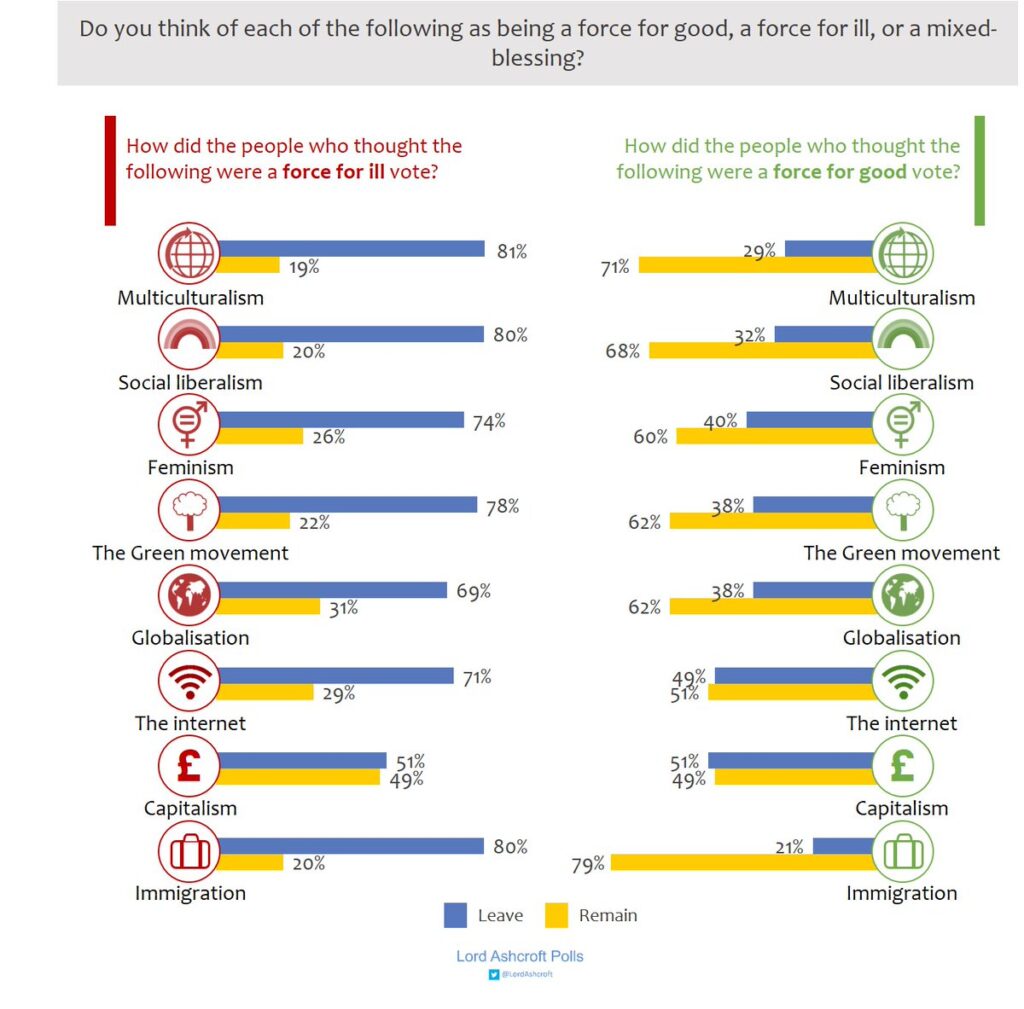
For all campaigners, if we want to grow support for our issues then we have to do that amoung enough groups to demonstrate their are political gains to be made from backing our issues – to do that will mean getting outside of the big cities. Failure to do so and there is a risk that the issues that we’re campaigning on are seen in the same way that the Remain campaign was, as part of the elite establishment.
At times like this I can’t help but think of the example of Shelter who deliberately sent there teams out and about to marginal seats to test their key messages for their 2015 election housing campaign, or Invisible Children who while found success Kony 2012 but honed their message from years and years of presentations to groups of young people.
Both are examples of campaigns that got the need to understand the way to build support is to get out and understand the public they’re looking to support their campaign.
3. Talk to people – On Wednesday evening I heard from academic Josh Kalla talk about research he’s done with community organisers in LA to prove its possible to change minds on transgender people through deep canvassing – they’ve found that from persuasion conversations you actually can change the minds of people.
But deep canvassing not only requires time and people but also listening and sharing personal stories – all resources that require investing in and are perhaps in short supply.
One of my criticisms of the Stronger In campaign was its apparent obsession with high-visibility campaigning like street stalls and leafleting outside stations. While they might have been a necessity given the resources they had, it never felt like a strategy for connecting people with personal reasons to vote Remain.
4. Recognise that expert voices don’t cut through to all – The Stronger In campaign has spent most of the campaign telling us how many experts were for Remain. I’m sure that was backed up and informed by polling, but as the polling below shows for a myriad of reasons many people don’t trust ‘experts’ any more. It means we need to think again about our messengers as well as our messages.
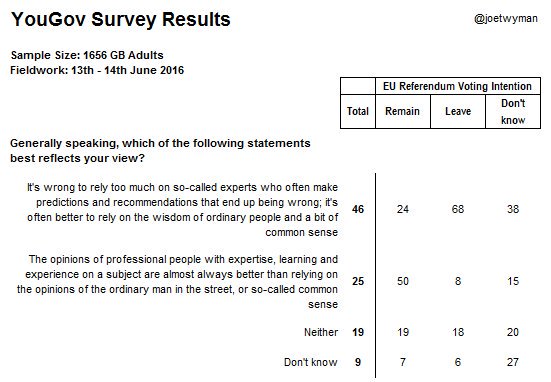
5. Bring our issues together – Our campaigning can sometimes pit one issue against another, but in wake of the referendum we need to explore how our campaigning issues are connected together and actively finding common cause. It’s a strong finding that comes out the Networked Change report (which I need to write more about) that those networks that are more successful are ones which cross movement boundaries – we need to find ways to connect issues together.
6. We are the leaders we’ve been waiting for – In the coming weeks and months we’ll need to organise ourselves with plans and strategies that respond to the situation we find ourselves in. Sometimes I live in the belief that others will be the leaders to help navigate a path forward, but if you’re reading this its down to you, me and other campaigners to explore solutions that allow us to do that.
7. We have #MoreInCommon – On Wednesday afternoon I stood with 5,000+ others in Trafalgar Square to say that we have #MoreInCommon to celebrate the life of Jo Cox. The event, which was one of 20+ around the world, was organised in just 5 days by friends and colleagues of Jo Cox. None of those friends wanted to be organising the event in such circumstances, but the way they went about wanting to celebrate the life was inspiring, helping to ensure the message from Jo Cox’s maiden speech that ‘We are far more united and have far more in common than that which divides us’ was shared. It’s a message to hold onto in all of the current uncertainty.
What's been changed by campaigning?
Over the last few months some have suggested that charities in the UK shouldn’t be involved in campaigning and influencing.
Charities have a proud role in mobilising public pressure for a good society and a safe planet.
Charities have successfully campaigned to protect public health from smoking; to protect the UK’s finest wildlife; to maintain liberties and freedoms; to achieving greater equality for women, and for lesbian and gay people; to enabling the UK to show global leadership on issues such as climate change or tackling disease, and so much more.
Many charities have a long histories of campaigning for change, but while the stories and examples of successful change brought about campaigning are passed down within organisations they aren’t collated together in one place.
Changed by Campaigning aims to change that.
Working with campaigning colleagues from across the environment and development sector I’m trying to collect together in one places a list of issues that have been Changed by Campaigning over the last 100 years.
Can you help by adding any examples from your organisation or work of issues that have been Changed by Campaigning here?
It shouldn’t take more than 10 minutes to complete the form – and we’ll use the examples to help make the case for why charities should continue to have the freedom and space to campaign.
We’re aiming to get a first list of what’s been Change by Campaigning in the UK together by early June, and I’ll try to make the material available to those who read the blog.
More than a run – lessons from parkrun for building campaign groups
Since the new year my Saturday morning routine has changed – it’s no longer reading the paper over a cup of coffee.
Instead you’ll find me standing outside in the cold at 8.55 with at least another 100 people ready to run 5km. I’ve officially become obsessed with parkrun. In fact I wouldn’t be exaggerating to say I’ve fallen for the concept.
parkrun for those who haven’t come across it is a free, weekly, 5km timed runs around a local park. They are open to everyone, free, and run by a team of volunteers.
Around the world there are over 700 parkrun’s – all of which have started in the last 10 years – with almost 1,000,000 having taken part in a parkrun in the UK alone. As a result the founders are getting lots of interest from government about how they’ve been so effective at increasing participation.
Now part of the reason I’ve fallen into parkrun is the result of campaigning. For over the last 18 months we’ve been campaigning to get our local council to allow us to run around Tooting Common, but that’s a story for another time.
But I think Park Run has already taught me a few lessons for campaigner about how to successfully engage people and build community.
1. Make the barriers to entry really low – getting involved in parkrun is easy, really easy. All the information you need is on the website and the only thing you need to do is register and print off your bar code which you use to get your time. All the information you need is on the website and there isn’t any pressure about having to to turn up in the right gear or in the latest trainers. The message is come and join us at 9am.
2. Encourage participation not performance – The motto of parkrun is that it’s just that a run not a race. Many people who might not see themselves as runners come along and get involved. The emphasis is not on how fast you run and the first and last runner get exactly the same experience. Although your encouraged to improve your personal best it’s always about participation – not expectation to become the next Mo Farah or Paula Radcliffe.
3. Provide incentives and quick feedback – Within an hour or so you get your run time emailed to you, it’s quick feedback on how you did. In the same vain, the weekly run report is a key volunteer task to help people feel that they’re part of a community. And built on the emphasis on participation not performance each run you do gets you one step closer to joining different ‘clubs’ which celebrate different milestones. It really helps to increase participation.
4. Build leadership – Each parkrun relies on a volunteer team to make it happen. From marshalling to report writing there are a whole number of roles that need to be filled. This isn’t about being elected onto a leadership team but about an ethos that encourages people to get involved. Somehow I’ve gone from being a ParkRun to making my debut as the Race Director in a few weeks’ time – I think my experience of running campaign events probably helps here – but the principle still stands, Park Run actively builds leadership – and encourages people to get involved in helping to lead there parkrun.
5. Encourage community – Parkrun might start out as standing in a park but it always finishes in a cafe. Community is very much encouraged and actively built. Even though I’ve only been involved for a few months I’ve started to see it in action. Last week, we had NAME join us to celebrate doing 250 run – but that wasn’t a solitary achievement, friends that NAME had met across the parkrun community joined her to run.
6. Make it easy to replicate – Parkrun hasn’t grown as the result of a central team of paid staff setting up them up one run at a time, instead the small parkrun core team make a whole host of resources available to local groups of volunteers looking to set up a run. They play an enabling role – recognising again the need to build leadership, and as a result new runs are starting all the time.
While many of the principles above aren’t new to those who’ve been experienced at building activists groups – watching how parkrun has grown so quickly, especially drawing in so many new people should provide new insight for building activist communities.
Finally, If you want to understand what all the fuss is about, watch this little film about why so many people #loveparkrun.
Organising to build power – reflections on Hahrie Han skillshare
Yesterday I had the opportunity to spend a day learning from US academic and trainer Hahrie Han on how we can organise activists. It was a cracking day alongside 50+ other campaigners, full of lots of thought provoking, challenging and inspiring content about how we can work to organise activists to deliver change.
It’s part of a series of events that Hahrie is doing while she’s here in London, this evening Hahrie is giving a lecture in conjunction with the University of Westminster. While the lecture is fully booked you can watch a free web stream of the lecture from 5.30pm today (31st March) here.
Walking away from the day I’m struck by a few lessons that I want to dig into more in my work.
1 – We need to get comfortable talking about transformation and power – Perhaps its our British reserve but because the word transformation seems to be associated with religious fever, while power is seen as a battle between good and evil, we don’t feel comfortable talking about them.
But as Hahrie suggested ‘movements build power not by selling people products they already want but instead by transforming what people think is possible’. We need to help people believe that transformation is possible and that starts by talking about it.
When it comes to power, we spent time considering the work of Steven Lukes and his Three Dimensions of Power. Lukes argues that power is exercised in three ways – visible, hidden and invisible.
Visible power is what we see happening in voting in elections or in Parliament – it’s perhaps the form of power that as campaigners we spend much of our time considering – how can we get MPs to vote for our issue in Parliament for example, but invisible power are the factors/beliefs/assumptions about how the world works that are often imbedded into our institutions.
Campaigners can spend lots of time talking about how we can overcome visible, but organising requires us to consider invisible power that prevents challenging the status quo. We need to spend more time talking about and wrestling with where power really is, and strategising on how we respond.
2 – Agency is about autonomy as well as competence – Agency is the ability to achieve purpose – and in most western countries individuals sense of agency is declining. We’ve often see increasing agency in those we work with as simply providing people with the skills they need – so they have competence to go out and make the change we’re looking for – perhaps because they’ve been trained to use a particular tool or approach.
Hahrie suggested that agency is not simply about make people feel they have the competence to use a tool it’s also providing them with the autonomy to use those tools – the space to act on it free from the control of an organisation.
3 – Good organisers are not always the first to put their hands up – Zack Exley one of Bernie Sanders lead organiser has spoken about ‘the tyranny of the annoying‘ when the worst people with the most time on their hands take over, and when it comes to picking organiser the same could be true.
Good organisers aren’t always those who are the first to volunteer, they can just be those with time to get involved, but instead individuals who have an ability to learn and reflect, are able to hold the juxtaposition between pain (the challenge of injustice) and redemption (hope that it can be overcome) and relational capacity.
4 – What brings you into belonging to a community – Growing up in a church community, I spent lots of my teenage years in debates about if becoming part of the church meant that you have to first believe then behave before you could belong. There is a growing conversation in church circles that actually the focus should be on belonging, and from that behaviour and belief will come. See below for more on this.
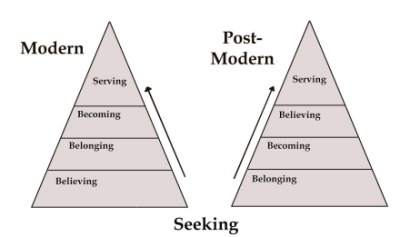
For many who come into activism the same is true. We often assume that people’s engagement in our issues comes first from a belief in our message and from that becomes the behaviours (like taking an action) and belonging (forming your support for an issue as part of your identity).
But evidence from pro-life activism in the US suggest it’s the other way around. Half of those who got involved in pro-life activism were indifferent to the issue when they first got involved, instead they did so because they were looking for community or invited by a friend. The belonging came well before the believing, are we creating activism spaces that encourage belonging?
5 – It’s not just about how profitable an organisation is – When it comes to metrics of success, we should take the same approach that financial analysts who don’t just judge the performance of a company in a given year on the profits they’ve made, but also the assets they have which inform their ability to make future profits for an investor.
Should the same be true of our approaches? Focusing on the wins achieved (the profit) but also the capacity going forward (the assets) which will inform the change we can deliver in the future.
There was lots of other insight wrapped up in the day, but I also walked away with some very practical reflections;
- We need to be finding our own community of academics and practitioners who are researching this – most of the literature that we covered was drawn from the US (and even then the body of work is fairly small). We need to find academics in the UK who want to dig into what’s working and not working here.
- It’s about mixing up and learning from different disciplines – Across the day we drew on insights from a range of approaches as wide as behaviour psychology to those teaching at business schools. Campaigners and organisers would do well to learn from across academic approaches.
For those who joined the skill share or the lecture, I’d be interested in learning what you’re thinking.
Campaign innovation and the US elections
I get hugely excited about the US elections – and now we’re 2 months into the primaries – it’s a good opportunity to look at some of the different innovations, tactics and approaches that the campaigns have been using.
So here is some Easter reading from the campaign trail – and don’t worry it doesn’t mention Trump once!
1 – Bernie Sanders is building a whole new approach to organising – Lots has been written about the Obama organising model, but reading about the Sanders campaign it looks like he’s building ‘Organising 3.0’, with a focus on local empowerment and leadership coupled with technological innovation. This from Paul Hilder who is inside the campaign is good as is the always excellent Sasha Issenberg.
2 – Everyone is using persuasion – I’ve long been fascinated by how social pressure techniques can get individuals to take action. It’s a growing area of academic research mainly in elections – for example helping someone make a plan for voting on election day can increase turnout by up to 4% – this is a good primer of some of the approaches used in the Iowa Primary.
3 – It’s getting harder to reach people on the phone – but text is where it’s at – Phone banking had long been a key element of reaching voters but its getting less and less effective – in one week in January, the Sanders campaign had to make 250,000 calls to have just 11,000 phone conversations, but all the campaigns are actively trying to build SMS lists (and the Sanders campaign is also using some cool tools to engage volunteers via text)
4 – Digital innovation – From Hilary Clinton on Snapchat, Ted Cruz’s campaign mining information from Facebook profiles, John Kasich looking at networks built from offline sources of information and the use of Facebook Live lots of campaigns are doing interesting digital innovation. Lots more here.
5 – You probably can’t win without getting the basics right – While it’s easy to get excited about the new tools and approaches, campaigns still need to be won by getting people out to vote, and that needs a well targeted ground game something that Ted Cruz’s campaign used to led him to victory in the Iowa primary. While on the Democratic side, Bernie Sanders team have build a app that allows anyone to start canvassing for him.
I’m sure in the next 6 month we’ll see lots more interesting innovation and learnings from the US campaign trail. Watch this space.
Leadership roles within an advocacy movement
I’m reposting some of my favourite and still relevant posts from the archives. This first post looks at the variety of roles needed in any advocacy movement. I’m reposting it after reading this over on OpenDemocracy.
American’s love the concept of leadership. Go into any bookshop and you’ll find shelves dedicated to the subject, attend a conference and you can guarantee that the word ‘leader’ will have been used a dozen times before the lunch break.
So perhaps it’s no surprise to find that it’s our colleagues in the US who have been thinking about leadership models and advocacy.
The Institute for Sustainable Communities – Advocacy and Leadership Centre has produced ‘Leadership Roles within an Advocacy Movement’, a short and readable paper in which they identify 11 different types of leadership needed within a movement arguing that ‘a movement must have a plurality of leaders, filling a cabinet of distinct, yet complementary, leadership roles. By utilizing a diverse cabinet of leaders, a movement develops a powerful dynamic that strengthens and emboldens, bringing the movement closer to optimum gains and successes’.
The list looks like this;
-
Visionaries who raise the view of the possible
-
Strategists who chart the vision and achieve what’s attainable
-
Statespersons who elevate the cause in the minds of both the public and decision-makers
-
Experts who wield knowledge to back up the movement’s positions
-
Outside Sparkplugs who goad and energize, fiercely holding those in power to account
-
Inside Advocates who understand how to turn power structures and established rules and procedures to advantage
-
Strategic Communicators who deploy the rhetoric to intensify and direct public passion toward the movement’s objectives
-
Movement Builders who generate optimism and good will, infecting others with dedication to the common good
-
Generalists who anchor a movement, grounded in years of experience
-
Historians who uphold a movement’s memory, collecting and conveying its stories
-
Cultural Activists who pair movements with powerful cultural forces
I don’t disagree with any of these but wonder if they’ve missed out a couple of key leadership approaches;
Pioneer – Someone who pushes the movement to make use of new tools and tactics. Most recently they would have been engaged with making the most of digital tools to further our campaigning, but throughout the history of campaigning we’ve had individual leaders who have been prepared to push into making use of new tools and tactics. This is different from the ‘visionary’ because they’re defined by the tactics they use.
Administrator – Too often forgotten but every campaign needs a solid and dependable administrator. This is not simply a service function, but a leadership function, someone who is their to ensure that the organisation of the campaign keeps pace with the growth of the energy behind a campaign issue. Too often campaigns fail because they don’t have the material resources or the structure to sustain them.
I was also thinking about the idea of adding in a ‘visualiser/designer‘. Someone who use creative tools to help communicate the essence of the campaign. Someone who harness the notion that ‘a picture is worth a thousand words’, but I’m not sure if this is more a branch off from the ‘strategic communicator’ role than a stand alone approach.
Postscript – The comments on the original post generated a few suggested other roles;
The Activist – the person who constantly pushes others to action, who says “Let’s stop talking and DO something!” This not the “cultural” activist (which I suspect is hard to distinguish from the Strategic Communicator). This is the person who boards the oil rig, who takes round the petitions, who pushes the boundaries of what normal people are willing to do. Some movements are dominated by these Activists, especially the “non-violent direct action” folks.
The Process Addict – every movement has these, especially when there is consensus decision making! This is the person who holds people to the values of the movement, and helps develop an internal culture that is ethically consistent. You may think “that’s not a leader!”, but actually a good many social movements reject hierarchical models of leadership altogether. You can’t ignore the long tradition here. The Process Addicts are concerned with means as well as ends, and hold people to values of respect and openness even when they are “inconvenient”. Too often “leadership” implies single individuals taking major roles and responsibilities. Don’t forget that the shepherd can be a leader too.
What do you think? What else has been missed out?

